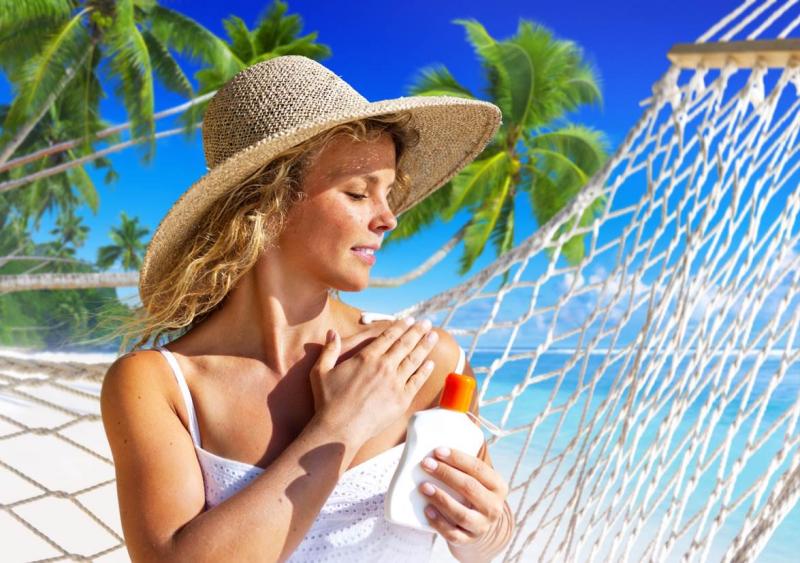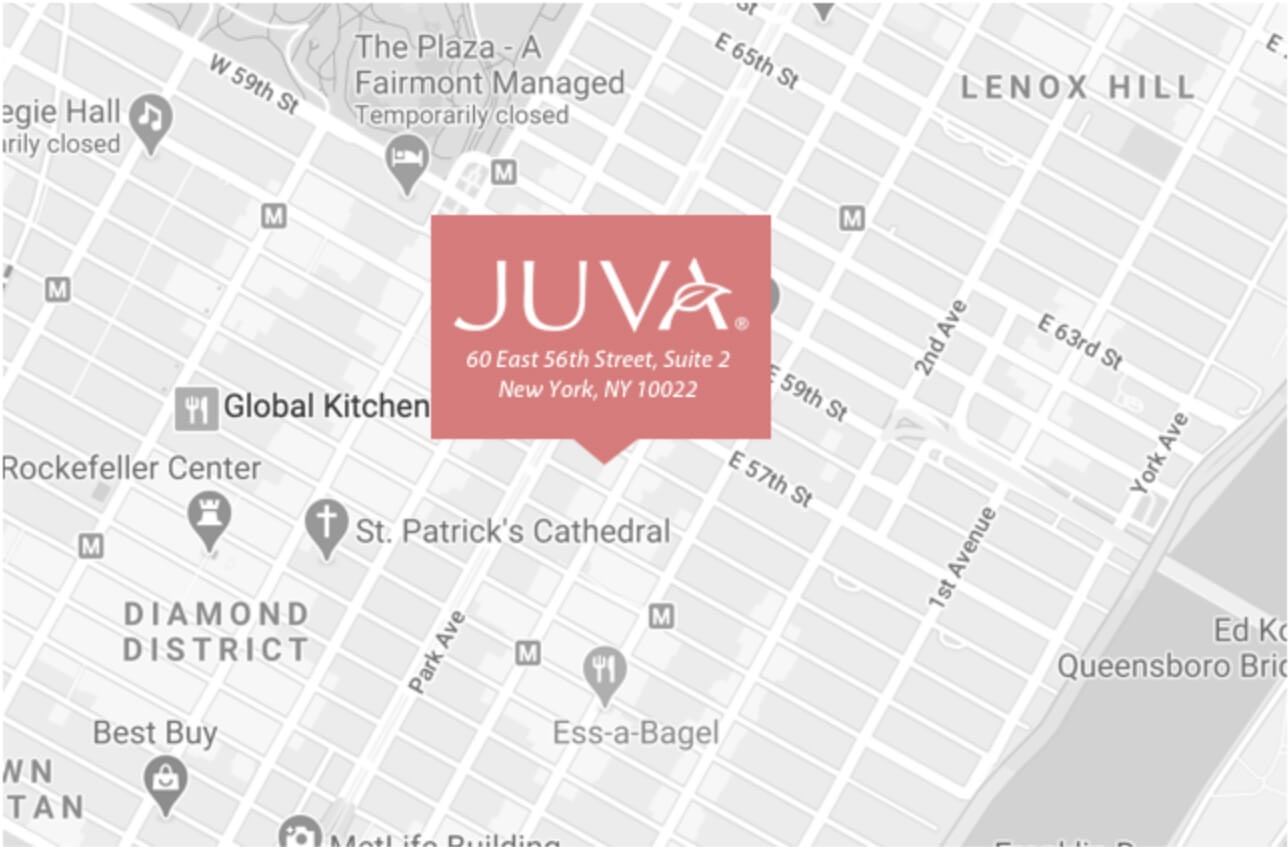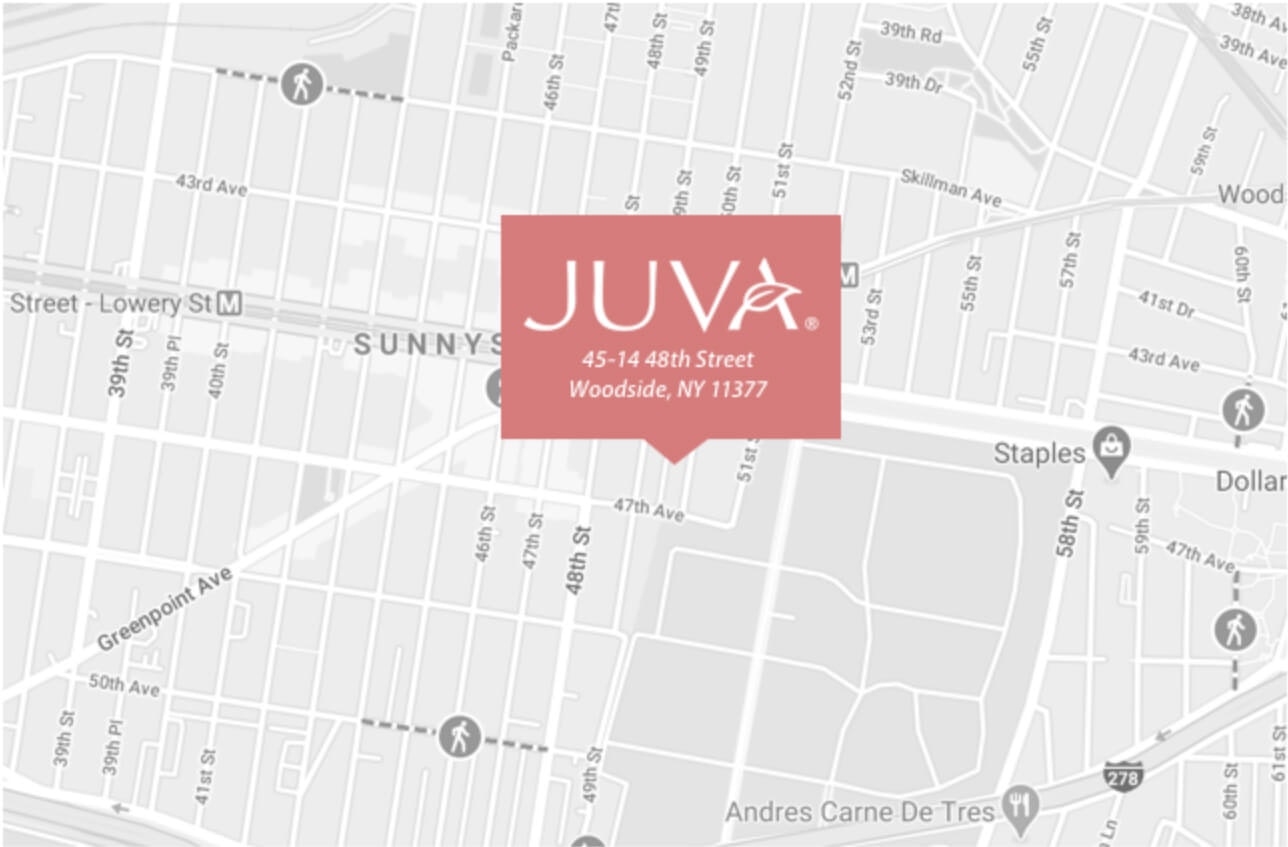
May is Skin Cancer Awareness month, so our Nurse Practitioner, Marianne Woody, put together some important information to keep in mind when you get ready to bathe out in the sun this summer. If you feel you have suspicious moles or brown spots, feel free to schedule a skin cancer screening at JUVA. Our team of experts will ensure you have all the information you need when it comes to preventing and taking care of skin cancer. Call (212) 688-5882.
Photobiology
• Refers to the study of sun exposure and ultraviolet radiation effects. Ultraviolet radiation from the sun is divided into three wave length ranges: UVA (320 to 400 nm), UVB (290 to 320 nm), and UVC (200 to 290 nm).
• Different UV wavelengths produce different effects of skin damage.
1. UVA, penetrates the skin more deeply than UVB, and plays a
major part in skin aging and wrinkling (photo aging)
o It may penetrate thru a window
2. UVB, is the chief cause of skin reddening, brown spots and
sunburn. It tends to damage the skin's more superficial
epidermal layers.
o It plays a key role in the development of skin cancer and a contributory role in tanning and photo aging
3. UVC is absorbed by the ozone layer in the atmosphere and therefore UVC does not reach the earth's surface. Maybe UVC will become more problematic with
global warming.
•Sun damaged skin appears wrinkled, thickened, and has a yellow discoloration.
Seek Shade
•Avoid being outdoors in direct sunlight too long especially between the hours of 10 AM-2PM when UV light is the strongest.
• Sand, water, and snow reflect light increasing the amount of UV light you receive so be extra cautious.
• While typical windows block most of UVB rays, UVA rays can penetrate thru windows to cause skin damage even if you don’t feel that you are getting burned.
• Check the UV Index forecast to know your UV exposure risk. (A higher UV Index on a scale from 1 to 11+ means more skin damaging UV radiation is reaching the earth.)
oThe National Weather Service calculates the UV Index forecast for most ZIP codes across the U.S., and EPA publishes this information
• The Skin Cancer Foundation in the United States has developed a list of products, including cosmetics, clothes, and laundry additives, that can provide sun protection.
Wear a Hat
• A tightly woven hat with a wide brim (minimum of 3 inches) all around is ideal to protect the scalp, forehead, eyes, ears, and nose.
o A baseball cap just protects the front and top of the head but does not protect the ears, nose or neck when skin cancers commonly develop.
• A shade cap which has fabric draping down the sides and back provides more protection when longer outdoor activity is planned.
Clothing
• Wear Clothing to protect the skin as much as possible when you are out in the sun.
• A tightly woven fabric protects skin more than a loosely woven fabric.
• Some children’s swimsuits are designed to cover the child from the neck to the knees.
Wear Sunglasses
• Long hours in the sun without eye protection increases your chances of developing cataracts, thickening of the eye lining (called a Pterygium), and skin cancer of the eye or eyelids.
• Ideal sunglasses should block 99-100% of UVA and UVB. Labels that say- meets ANSI UV Requirements will protect the delicate skin around the eyes as well as the eyes themselves.
o Polarized lenses reduce glare but don’t take the place of UV protection.
o Just because a lens is almost black doesn’t mean it’s blocking UV light.
UV protection comes from an invisible chemical applied to the lens, not from the color or the darkness of the lens.
• Wrap-around sunglasses and wide-brimmed hats add extra protection because they help block UV rays from entering the eyes from the sides and above.
Choosing a Sunscreen
• We recommend broad-spectrum protection (blocking both UVA and UVB) sunscreens with a SPF values of 30 or greater applied 15-30 minutes before sun exposure
o Sun-Protection Factor (SPF) number is the level of protection the sunscreen provides against UVB rays. The higher the number means more protection:
• SPF 15 sunscreen filter out about 93% of UVB rays
• SPF 30 sunscreen filter out about 97% of UVB rays
• SPF 50 sunscreen filter out about 98% of UVB rays
o There are two basic classes of Sunscreens, Physical or Inorganic compounds and Chemical or Organic compounds
Physical sunscreens such as zinc oxide, or titanium dioxide act to reflect and scatter both visible and UV light.
• Tend to be thick in consistency
• Are not known to cause allergic reactions and are good choices for individuals with sensitive skin.
Chemical sunscreens absorb UV Radiation and typically have a limited spectrum of protection.
• There are about 17 different chemicals in various types of Sunscreens.
•Broad-spectrum sunscreens are generally produced by combining chemicals to block different wavelengths of UV absorption light.
Combination sunscreen include both Physical and Chemical types to maximize efficacy and cosmetic acceptability, such as JUVA Advanced Anti-Photoaging
Sunscreen Broad Spectrum SPF 50+.
• Sunscreen is available in many forms – lotions, creams, ointments, gels, sprays, wipes and lip balms.
o One ounce of sunscreen (equivalent to two Tablespoons or a shot glass full) is needed to cover exposed body parts of the typical adult.
o Caution using spray sunscreen as a body part - such as the back may be easily missed during self application.
• Reapply sunscreen every 2 hours for maximum protection.
o Apply more often if swimming or sweating
• Protect your skin even on cool or cloudy days.
o Skin moisturizers that have added sunscreen or Women’s cosmetic make up are a good ways to use sunscreen regularly.
• If acne prone, use oil free and non-comedogenic sunscreen products. such as JUVA Oil Free Non-PABA Moisturizing Sunscreen Broad Spectrum SPF 30+.
• The expiration date of sunscreens is 3 years after the purchase date if there is no expiration date on the container – that is if the container has been stored at optimum temperature
o Discard before the expiration date if it has been exposed to extreme heat.
Avoid Tanning beds and Sunlamps
• Tanning bed use has been linked with an increased risk of melanoma the deadliest form of skin cancer, especially if tanning is started before the age of 30.
• If you want a tan, consider using a sunless tanning lotion, which can provide a darker look without the danger.
op The most common ingredient in sunless tanners is dihydroxy acetone (DHA) a color additive that darkens the skin by reacting with amino acids in the skin’s
surface.
p Care that eyes, mucous membranes are not sprayed.
Children
• Babies younger than 6 months should be kept out of direct sunlight
o Protect the children from the sun by using umbrellas, hats and protective clothing
op Sun screens are generally not recommended on infants until after 6 months of age.
However, when adequate clothing and shade are not available, a minimal amount of sunscreen with at least 15 SPF can be applied to small areas, such as
the infant's face and the back of the hands.
• Oil-based physical sunscreens (ie, titanium dioxide and zinc oxide are preferred to chemical sunscreens for infants and children because they offer broad spectrum protection and have minimal irritation, sensitization, and skin penetration potential.
• It is also important to begin wearing eye protection at an early age.
o Sunglasses should provide protection against UV light
Vitamin D
• Vitamin D is and essential nutrient that is vital for strong bones, a healthy immune system, and may help to lower the risk for some cancers.
• Your skin makes vitamin D naturally when you are in the sun.
• How much Vitamin D you make depends on many things, how old you are, how dark your skin is, and how strong the sunlight is where you live.
• Dermatologists recommend that vitamin D should be safely obtained from a healthy diet that includes dairy products and fish, which are naturally rich in vitamin D, milk and cereals which are fortified with vitamin D, and /or vitamin D supplements – not from UV exposure.
Oral Photo protection
• Polypodium leucotomos, an extract from a fern plant grown in Central America, is the most studied oral dietary supplement shown to decrease UV – induced skin thickening, skin redness and DNA damage from the sun.
• While not a substitute for sunscreen, this dietary supplement is sold a brand Heliocare and FernCare PLE
Additional information from The American Cancer Society:
Slip! Slop! Slap!® and Wrap
“The American Cancer Society’s awareness campaign for skin cancer prevention promotes the slogan “Slip! Slop! Slap! and Wrap.” This catch phrase reminds people of the 4 key ways they can protect themselves and their children from UV radiation:
• Slip on a shirt
• Slop on sunscreen
• Slap on a hat
• Wrap on sunglasses to protect your eyes and sensitive skin around them”
Click on this link to take a quiz on Sun Saftey: Click Here
National Skin Cancer Detection and Prevention Month – May 2016
• Don’t Fry Day (May 27)*
• Melanoma Monday (May 2)




